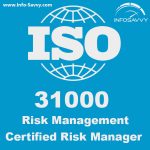Six Sigma is an improvement methodology that uses the Define – Measure- Analyze- Improve – Control (DMAIC) lifecycle used for focusing on reducing defects in an organization’s processes. Implementing six sigma leads to improved quality along with more efficient ways of producing quality and logical and objective way to identify, measure, and eliminate those problems. Both manufacturing and service organizations stand to benefit from these methodologies.
Lean management is a method of running an organization. This approach encourages continuous improvement, which is a long-term process where small changes are implemented systematically. These changes to processes are incremental and increases quality and efficiency.
Using a variety of structured and statistical tools, six sigma helps us to optimize business processes to the fullest extent. The lean six sigma tools can be applied for various processes in the organization such as design, marketing, sales, production / operations, purchase, stores, customer- service, finance, legal-compliance and risk management. Six Sigma Green Belt participants receive an introduction to the tools and methods that are necessary to successfully participate in Problem Solving and DMAIC improvement projects in a manufacturing or transactional environment
Lean Six Sigma Green Belt Training & Certification
Six Sigma is an improvement methodology that uses the Define – Measure- Analyze- Improve – Control (DMAIC) lifecycle used for focusing on reducing defects in an organization’s processes. Implementing six sigma leads to improved quality along with more efficient ways of producing quality and logical and objective way to identify, measure, and eliminate those problems. Both manufacturing and service organizations stand to benefit from these methodologies.
Lean management is a method of running an organization. This approach encourages continuous improvement, which is a long-term process where small changes are implemented systematically. These changes to processes are incremental and increases quality and efficiency.
Using a variety of structured and statistical tools, six sigma helps us to optimize business processes to the fullest extent. The lean six sigma tools can be applied for various processes in the organization such as design, marketing, sales, production / operations, purchase, stores, customer- service, finance, legal-compliance and risk management. Six Sigma Green Belt participants receive an introduction to the tools and methods that are necessary to successfully participate in Problem Solving and DMAIC improvement projects in a manufacturing or transactional environment
Overview
Lean Six Sigma Green Belt Training & Certification
Six Sigma is an improvement methodology that uses the Define – Measure- Analyze- Improve – Control (DMAIC) lifecycle used for focusing on reducing defects in an organization’s processes. Implementing six sigma leads to improved quality along with more efficient ways of producing quality and logical and objective way to identify, measure, and eliminate those problems. Both manufacturing and service organizations stand to benefit from these methodologies.
Lean management is a method of running an organization. This approach encourages continuous improvement, which is a long-term process where small changes are implemented systematically. These changes to processes are incremental and increases quality and efficiency.
Using a variety of structured and statistical tools, six sigma helps us to optimize business processes to the fullest extent. The lean six sigma tools can be applied for various processes in the organization such as design, marketing, sales, production / operations, purchase, stores, customer- service, finance, legal-compliance and risk management. Six Sigma Green Belt participants receive an introduction to the tools and methods that are necessary to successfully participate in Problem Solving and DMAIC improvement projects in a manufacturing or transactional environment
Course Outline
Lean Six Sigma Green Belt Training & Certification
- Introduction: Overview of Six Sigma
- History & Fundamentals of Six Sigma
- Lean & Six sigma
- VOC (voice of customer)
- Kano Analysis,
- CTQ (Critical to Quality),
- CTP (Critical to Process). Y=F(X),
- COQ (cost of quality) Six Sigma & Profitability.
- Application Tree of SS Tools.
- DMAIC & DMADV
- Six Sigma—Define
- SS Measurements COQ (Cost of Quality),
- Hidden Factories, DPU, DPMO, RTY
- Define – Pareto analysis, Spider/Radar chart
- Project charter
- Basic project management tools
- Six Sigma—Measure
- SIPOC, Process Mapping.
- NCC concept with Control & Noise Parameters, SOP/Wls.
- Data Types, Measurement Scales, & Sampling.
- MSA (Measurement system analysis)
- Data Collection Tools
- Sigma—Analyze
- Root Cause Analysis,
- Why – Why analysis,
- 8-D: The Eight Disciplines
- 5-W+1-H,
- Forced-Field,
- CE Diagram (CAUSE AND EFFECT ANALYSIS),
- Mind/Brain Mapping,
- Run Charts & Normality study,
- MV Charts (MULTI-VARI CHARTS),
- Scatter Plots & Correlation & Regression concept.
- TRIZ & Types of Improvements
- Improve and Control
- Concept of Hypothesis Testing
- Mistake Proofing techniques
- Understanding FMEA (Failure Mode Effects Analysis)
- Process FMEA & Control Plan
- PFMEA Severity Evaluation Criteria
- PFMEA Occurrence Evaluation Criteria
- Detection Ranking
- PFMEA Detection Evaluation Criteria
- Introduction of Process Capability & Centrality
- SPC — control charts
- Lean principles in the organization
- Value Stream mapping
- Continuous flow manufacturing
- Bottleneck Identification
- Takt Time & Cycle Time.
- Single Minute Exchange of Dies (SMED)
- Set-Up Reduction (SUR)
- 5-S and visual Management
- Kanban
- Kaizen and Kaizen Blitz.
- Total Productive Maintenance
- Value-added and non-value-added activities
Benefit
Lean Six Sigma Green Belt Training & Certification
- Understand Lean Six Sigma & DMAIC Methodology
- Identify the voice of customers, their requirement & needs
- Understand their role in the success Deployment
- Understand how to develop a strategy for Lean Six Sigma approach
- Apply the Lean and DMAIC process to Business issues
- Awareness of Lean Techniques
Who Should Attend
Lean Six Sigma Green Belt Training & Certification
- Engineers /Executives / Professionals working in different sectors seeking knowledge Six sigma as management tool for process improvement at their work place.
- Quality and Process Managers, Engineers and Executives who need to have a better understanding of Six Sigma and the application of Six Sigma in process / quality improvements.
- Production Managers, Production Supervisors and Customer Service Managers.
- Consultants who want to incorporate Six Sigma Green Belt in their service offerings and help their clients implement it.
Exam Information
Lean Six Sigma Green Belt Training & Certification
Exam prerequisites:
- Certification candidate shall have minimum three years of work experience in the
field of Quality or Process Management and
- Should have attended minimum of 24 hours of class room training provided by any Certified Lean Six Sigma Training partner or
- Shall have under gone online training on six sigma for minimum of 21 hours
engagement through other Certified E —Learning module or
- Candidates with Certified yellow Belt / lean certificate
Exam format:
- Multiple-choice examination consisting of 50 questions.
- A pass is achieved by answering 70% of the questions correctly (35 out of 50 marks)
- Time: 75 minutes.
- Mode: Electronic and pen paper based
- This is an open book exam
- Each question is of one mark
- Use of scientific calculator in examination is permitted
Lean Six Sigma Green Belt http://www.info-savvy.com/product/lean-six-sigma-green-belt/









Reviews
There are no reviews yet.